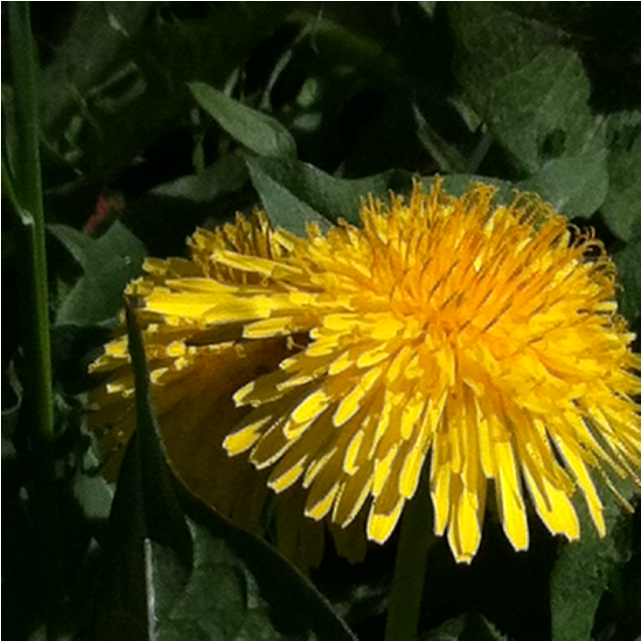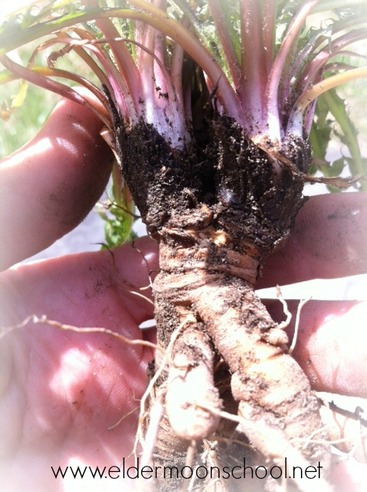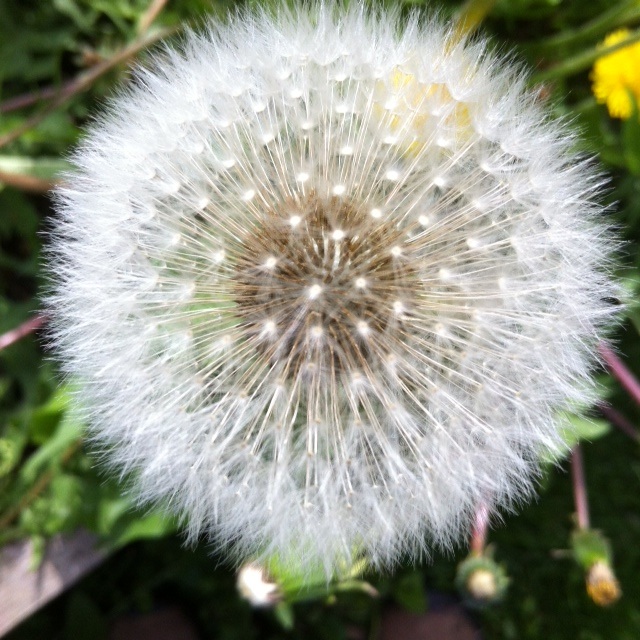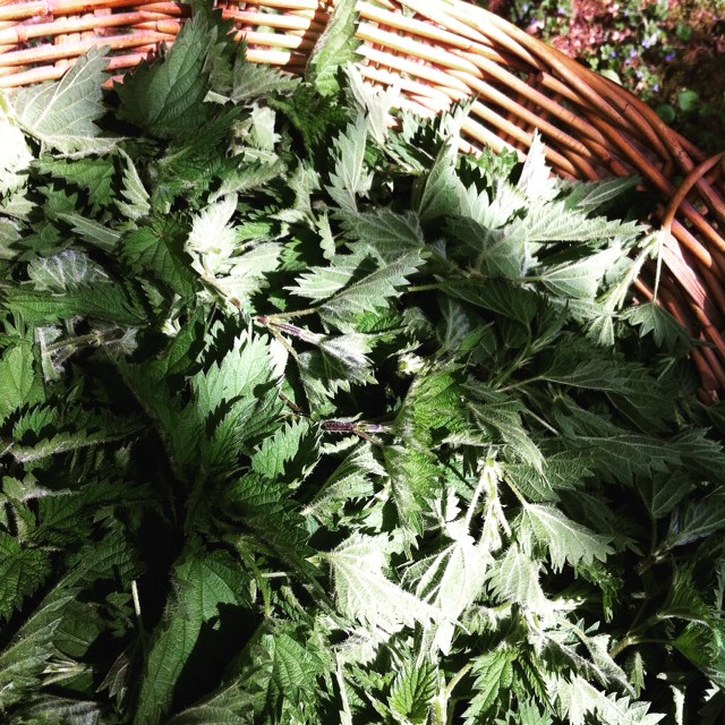 Dandelion Dandelion ~Collecting Plants From The Wild So you want to make good medicine, right? Me too. This is one of the most frequently asked questions, "When do I harvest?" In order to make good medicine the plants require that we learn about them and how they grow. It's the same as with our food plants. They have strong variations in what they prefer and they follow the cycles of the seasons that are very much an end result of the dance between the Sun and the Moon. You can get to know the plants that grow near you just by walking in Nature and looking around using a good field guide. This is the only way to truly begin your journey into healing with plants. "Know your local landscape. Get more intimate with the plants. " I love to cross reference the medicine plants I desire with my geographic region and see who grows wild near me first. Then I plan a little quest to meet this plant in its natural environment. Sometimes my quests are quite consciously planned and sometimes not! I remember knowing Skullcap in my garden only and grew this plant for years. I also knew Skullcap was a wild one too but had never located it for it's nature is not invasive or jumping at humans like some do. On one particularly hot summer day, my 2 sons and I decided to explore our changed local landscape after extensive flooding of our local mountain streams in Phoenicia, NY. We oriented to a new swimming hole and while I was sitting among the stream bed stones relaxing and reading as they swam, I realized that the plant tickling my elbow was indeed... Skullcap! I had not set out to learn from Skullcap but our paths crossed anyway. Meeting an old friend in person in an unexpected way is right up my alley and I was graced with lessons which deepened my understanding of Skullcap. I always find it easily in the wild after this and grow it better in my garden too since Skullcap has taught me well! Good Wild Harvesting Rules To Follow are: ~Take only what you need to get you to the next harvest time. Resist that urge to over harvest with abandon. There is a frenzied harvest mind-set that happens with some humans and it is known to devastate wild stands of plants. Clock this in your self and breath through it and get clear about what you actually need. It's not necessary to engage this and the plants are here with us, always. Trust this. ~Attune to the plant before taking. Do you have a sense of "yes" after you take a moment to feel into this question. Follow your intuition. No’s are for good reason… for one thing, the soil could be poisoned and you are being protected by the “No”. ~Always leave the healthiest plants for reproduction of the hardiest seeds or root runners. This ensures our future supply and co-existence with this lovely healing plant. So if I see 10 plants then I will take maybe 3-4 or less and always leave the strongest plant or two to re-seed untouched. This is done for keeping the gene pool out there nice and healthy and keeping one's mind on future generations. ~Wait until the plant is naturally dry after rain or dew before collecting. Morning is always a favorite time for herbalists to harvest. ~Take only 25% of the plant if harvesting leaf or flower or seed to ensure you don’t kill or severely deplete the plant's life force. If you have 10 plants then spread out what you need to harvest from all of them and that way one plant does not carry the full harvesting burden. ~When harvesting roots in the wild... be sure to know about the populations of your plant. For example, Bloodroot or Blue Cohosh have far greater the number of particulars to grow well than Dandelion, Yellowdock, or Burdock. The former two love to be more sequestered in deeper forested areas and are, for many, hard to grow. That being said, I would gently lift the dug up roots, trim the roots, and replant the crowns so the plant does not die. Offer water too and always leave the area looking as if you were never there. It is sad to see people leave gaping holes in the Earth and whole stands of plants gone that are rare or hard to find. FYI - Bloodroot is a rhizome - a ground level stem so replanting is more challenging because the medicine is in the rhizome which you must take. The good news is she is so strong and concentrated with her medicine that you never need much to cover your needs. The latter three are so abundant that I have been known to ask my CSA farmer/friends if I could get Burdock, Yellowdock and Dandelion from their fields in order to help with the weeds they do not want and we love. I would bring all my students too! We barely make a dent in the populations but the roots are much easier to extract from farm fields. Learn the life cycle and growing habits of your plants and you will make better medicine, always! ~Plants are harvested at their peak for the part wanted for medicine. Follow the growth energy of the plant. Time of year matters for the natural cycles rule this practice. If you are out of synchronicity then purchase your plants already dried for now until you can get in synchronicity with the plant's seasonal growing cycle. Just like dancing, you can do a little jig on the side until you know it’s time to jump in. Remember, follow the growth energy. Up in the Spring, peak in Summer, back down into the Earth in Fall, and either asleep as a plant or seed in Winter. Follow the growth energy for the part of the plant you seek. Spring to Summer for Leaves and Flowers and Barks Summer to Fall for Seeds once matured ~ dried on their own Fall for Roots ~ after the first hard frost ~Leave endangered plants alone. Period. They are often endangered because humans over harvest. Some are not aware of this dilemma and are not caring about the plants threatened existence. American Ginseng root can command $600/lb so greed has devastated it's wild existence. I do not divulge wild stands of rare plants that command such a price. I do visit them and take nothing. I say, find the plants first in the wild. Visit them. Study them. Grow them. Get intimate with them. When you begin to love the plants this way then your decisions are made from a different place. You think about not just your health but the health of the plant and the Earth too. There are almost always great alternatives that can be used because herbal medicine is a creative art as well. For more information on this topic, research United Plant Savers, an organization dedicated to raising awareness about this serious issue. I have a posted a free article from their site below as well. ~Know the land and who owns it before you harvest. People have been arrested for taking endangered plants or any plants on protected property such as within the state park systems. Know your areas well. Scout them out and then do return trips when you are sure or have asked and received permission. Stealing plants anyway from places you are not permitted to so makes bad medicine too. It matters. ~Positive identification of the plants is imperative. If you are at all unsure, then do NOT harvest or use it. There are plants that are poisonous and have look-a-likes. Many poisonous plants are powerful healing plants and one must dedicate time to studying them and their safe use. That being said, also know that no death from a plant happens quickly and there is much suffering which forces one to seek emergency care. Poison control centers are well versed in toxic plant issues and how to guide the hospital in one's treatment should this horrible event happen. In fact, hospitals are required to call them by law and it saves lives. This is documented for Poke strained with bare hands or too high a dose, many ingested toxic berries, toxic mushrooms, and poison ivy burned and inhaled or eaten at the wrong time. The plants work on our physiology. Skeptics love to dwell on this topic and shy away from all the good medicine plants can do. There are 1001 reasons to remain a skeptic. Bottom line, know what you are harvesting 100% or don't take any. Or take a sprig home and learn from it! ~Stay on chemical free land! The plants pick up the chemical pesticides and such, along with things like cosmetic chemicals or rug manufacturing chemicals are actually being identified in our blood and isolated in cancerous tumors. Harvest on land that has no chemical treatments on or near it. Harvest 20-30 feet from roadways. ~Annual, Perennial, Biennial? Anyone can tincture with dried plants bought at the store and never know the plant intimately. The medicine can be good at best but great medicine makers know the plant more intimately. You will need to have some idea of the life cycle of the plant in order to make the best medicine. Annuals - Plants that perform their entire life cycle from seed to flower in one growing season. They tend to make abundant seeds too to ensure survival of the species through its dormant phase. All roots, stems and leaves of the plant die annually. Only the dormant seed bridges the gap between one generation and the next through the deep cold journey of winter. Perennials - Plants that grow for many growing seasons. Generally the top portion of the plant dies back each winter and regrows the following spring after the roots hold their ground... underground. Depending on where you live, many perennial plants can keep their leaves year round and offer attractive borders and ground covers. Not the case here in NY where our winters are quite cold. So for me, for example, I treat Rosemary as an annual and plant her each Spring because she cannot survive Zone 5 winters. I harvest often throughout the growing season, which stimulates more growth, and then take all of her each Fall to dry by the wood stove. Technically she is a perennial. Biennials - Plants which require two years to complete their life cycle. The list is short for medicine plants but you must honor their way in order to make good medicine. First season growth often forms a rosette with no rising flower stalk. After the first year winter dormant phase, the flower stalk will form and rise and flower and seeds will set, mature, dry and fall to the Earth and the whole plant will die completely, roots and all. Examples: Burdock, Mullein, Angelica, Delphinium, Foxglove ~Harvest Exceptions for Biennial: Harvest roots in the Fall of first year. Some herbalist say spring of the second year/roots are okay too. I disagree after years of making medicine. The medicine is different with Spring roots versus Fall roots. You decide and you will have a strong opinion to like me after honing your medicine making skills! Leaves and flowers are fine whenever at their peak. Once the growth energy is moving to flower and seed, I tend to stop harvesting leaves so the plant can have the most leaf surface area for gathering sunlight energy to make her flowers and seeds. Annual/Perennial - A plant can behave as an annual or a perennial depending on local climatic and geographic growing conditions. As I mentioned with Rosemary, your location will determine how you work with the plant. It's like a fine dance partner, once you get in synchronicity with your partner it becomes joyous and easy and you trust each other and how you each move within the dance of medicine making. I do hope this is helpful. Follow these concepts and you will become a better medicine maker. Know your local landscape. Seek out the plant healers and hear their stories. Get intimate with the plants you seek. Then you will always make reliable, strong, good, healing medicine directly from the plants. Send questions! Much Love and Be Well - Jen Here is a great document from United Plant Savers website to keep you aware of our endangered plants. Enjoy!
0 Comments
Your comment will be posted after it is approved.
Leave a Reply. |
Details
Jennifer Costa, Herbalist-RN, Teacher, Botanist BS, EM-CST, and Founder of ElderMoon School of Herbs & Earth MedicineCategories
All
Archives
January 2023
|
||||||



 RSS Feed
RSS Feed